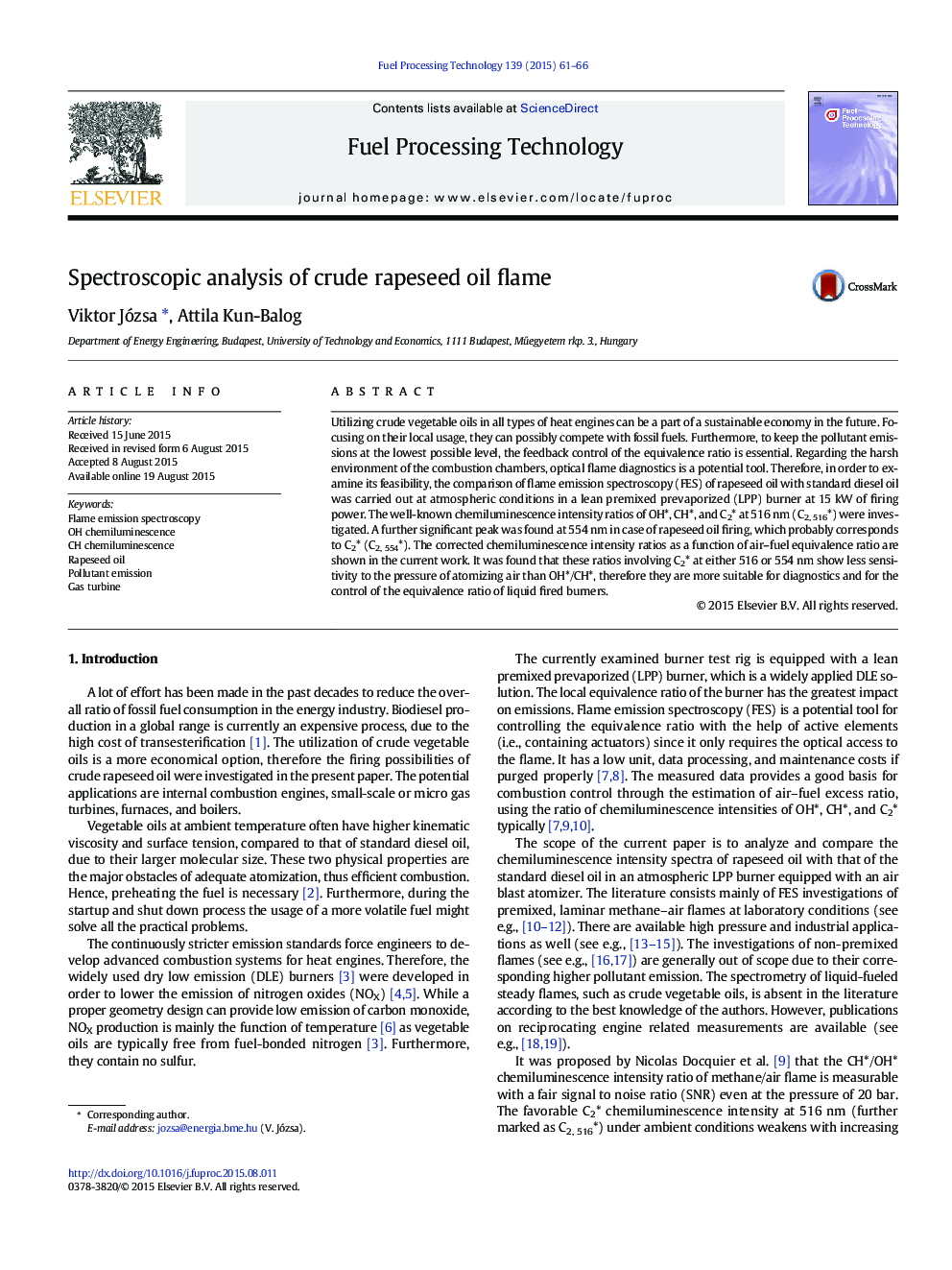| Article ID | Journal | Published Year | Pages | File Type |
|---|---|---|---|---|
| 209431 | Fuel Processing Technology | 2015 | 6 Pages |
•The flame emission spectroscopy of crude rapeseed oil and diesel oil was examined.•A remarkable peak at 554 nm was identified in the rapeseed oil spectra.•OH*/CH* ratio was found to be sensitive to the atomization pressure.•Ratios including C2, 516* or C2, 554* correlate with the equivalence ratio.
Utilizing crude vegetable oils in all types of heat engines can be a part of a sustainable economy in the future. Focusing on their local usage, they can possibly compete with fossil fuels. Furthermore, to keep the pollutant emissions at the lowest possible level, the feedback control of the equivalence ratio is essential. Regarding the harsh environment of the combustion chambers, optical flame diagnostics is a potential tool. Therefore, in order to examine its feasibility, the comparison of flame emission spectroscopy (FES) of rapeseed oil with standard diesel oil was carried out at atmospheric conditions in a lean premixed prevaporized (LPP) burner at 15 kW of firing power. The well-known chemiluminescence intensity ratios of OH*, CH*, and C2* at 516 nm (C2, 516*) were investigated. A further significant peak was found at 554 nm in case of rapeseed oil firing, which probably corresponds to C2* (C2, 554*). The corrected chemiluminescence intensity ratios as a function of air–fuel equivalence ratio are shown in the current work. It was found that these ratios involving C2* at either 516 or 554 nm show less sensitivity to the pressure of atomizing air than OH*/CH*, therefore they are more suitable for diagnostics and for the control of the equivalence ratio of liquid fired burners.
